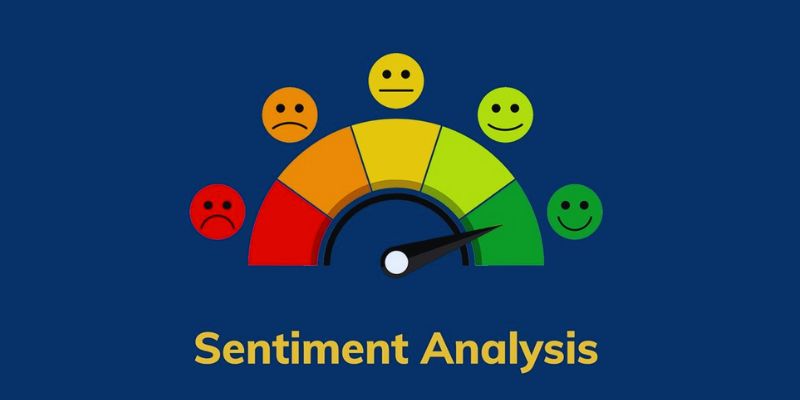Sentiment analysis is the textual identification of emotions. It guides one in deciding if a message is neutral, negative, or good. Many firms use sentiment analysis to enhance marketing plans, customer service, and product feedback. TensorFlow Extended (TFX) is useful for creating machine learning pipelines. It streamlines the handling of big-scale ML projects, preprocessing data, model training, and deployment of results.
Handling production-ready systems in challenging settings is best done with TFX. Google developed TFX to offer an end-to-end scalable outcome for machine learning chores. This article will walk you through the TFX sentiment analysis pipeline-building procedure. For every degree of experience, following the procedures is simple and clear.

Constructed on TensorFlow, TFX is a robust machine learning tool. It provides easy management of the whole machine learning lifetime. It covers data validation, transformation, model training, evaluation, and eventual deployment. From beginning to end, TFX guarantees the constancy and dependability of your ML pipeline. It lets teams create scalable, repeatable processes for practical use. TFX lets you find data problems early on and raise model accuracy. It promotes automation, so it speeds up and improves the process. For production and research settings, TFX is perfect. TFX streamlines your ML path regardless of your level of experience. Start immediately simplifying your machine learning tasks using TFX.
TFX has important components like:

Discover how TFX can help you quickly create and implement sentiment analysis models.
You need a dataset to begin sentiment analysis. One excellent choice is the IMDb movie review collection. It features good and bad reviews, tagged with a 1 or a 0. TensorFlow datasets let you download it. Create training and assessment sets from the data. TFX needs data in TFRecord format. Raw data could have to be converted into TFRecords. Save the data in a directory TFX components may readily access for later usage.
You will now design a sentiment analysis project's pipeline. TFX pipelines are Python definitions. You have to write a script to run and build the pipeline.
Import appropriate libraries:
import tfx
from tfx.components import CsvExampleGen, Trainer, Transform, Pusher
from tfx.orchestration.local.local_dag_runner import LocalDagRunner
Text data needs tokenizing and cleaning. The Transform element manages this phase. You compose an initialization function in another file (e.g., preprocessing.py). This feature controls text review processing.
Here's an easy example:
def preprocessing_fn(inputs):
import tensorflow_transform as tft
review = inputs['review']
review = tf.strings.lower(review)
review = tf.strings.regex_replace(review, r"
", " ")
review = tf.strings.regex_replace(review, r"[^a-z ]", "")
return {
'review_tokens': tft.compute_and_apply_vocabulary(review)
}
The Trainer element trains your model of sentiment analysis. You identify an algorithm in another file (e.g., model.py). For model development, you employ TensorFlow and Keras.
Here is a basic model:
def build_keras_model(vocab_size):
model = tf.keras.Sequential([
tf.keras.layers.Embedding(vocab_size, 64),
tf.keras.layers.GlobalAveragePooling1D(),
tf.keras.layers.Dense(64, activation='relu'),
tf.keras.layers.Dense(1, activation='sigmoid')
])
model.compile(optimizer='adam',
loss='binary_crossentropy',
metrics=['accuracy'])
return model
You have to assess your model to guarantee its performance following instructions. The evaluation component looks at whether the model is production-ready. It contrasts the fresh model with the current one. If a baseline model is not accessible, it nevertheless offers insightful measurements. To evaluate performance, you specify measures, including accuracy and AUC. If the model shows promise, it advances to deployment. TFX tracks and logs evaluation criteria automatically, therefore facilitating the monitoring of the model's development.
Once your model passes the evaluation, the Pusher component facilitates the distribution of it. It gets the model into a serving directory. The model then may be loaded into TensorFlow Serving. It lets online and mobile apps predict in real-time. Make sure that the model is kept in the TensorFlow Serving-compliant SavedModel format. Test the model locally before worldwide rollout. This stage guarantees the model operates in real-world surroundings by this. You ensure that your model is production-ready through exhaustive testing and deployment. For your sentiment analysis chores, proper deployment guarantees scalable and dependable performance.
Automation, scalability, consistency, and monitoring quickly simplify your machine-learning process.
TensorFlow Extended (TFX) for sentiment analysis simplifies machine learning. TFX automates important chores to guarantee flawless processes, including data processing, model training, evaluation, and deployment. It provides scalability and consistency and excels in managing complicated manufacturing environments and big datasets. TFX tracks model performance using built-in monitoring tools, enabling timely changes and enhancements. TFX guarantees high-quality findings and efficient performance in real-world applications by simplifying the construction, training, and deployment of sentiment analysis models, thus regardless of your level of experience as a developer. TFX accelerates and guarantees more dependability in the deployment of machine learning technologies.

How logic and reasoning in AI serve as the foundation for smarter, more consistent decision-making in modern artificial intelligence systems

Explore IBM Granite-3.0's setup, features, and real-world uses in AI. Learn to deploy it efficiently for enterprise tasks.

ChatGPT helps improve your listings by identifying SEO mistakes, correcting keyword issues, and enhancing content clarity—without losing your brand’s tone

Business professionals can now access information about Oracle’s AI Agent Studio integrated within Fusion Suite.

With TensorFlow Extended (TFX), learn sentiment analysis using this comprehensive guide for creating and implementing models

Get a clear understanding of supervised learning, including how it works, why labeled data matters, and where it's used in the real world—from healthcare to finance

Learn AI and machine learning for free in 2025 with these top 10+ courses from leading platforms, universities, and tech experts

AI Hallucinations happen when AI tools create content that looks accurate but is completely false. Understand why AI generates false information and how to prevent it

How open-source AI projects and communities are transforming technology by offering free access to powerful tools, ethical development, and global collaboration

GANs and VAEs demonstrate how synthetic data solves common issues in privacy safety and bias reduction and data availability challenges in AI system development

remove duplicate records, verification is a critical step, SSIS provides visual tools

Find the benefits and challenges of outsourcing AI development, including tips on choosing the best partner and outsourcing areas